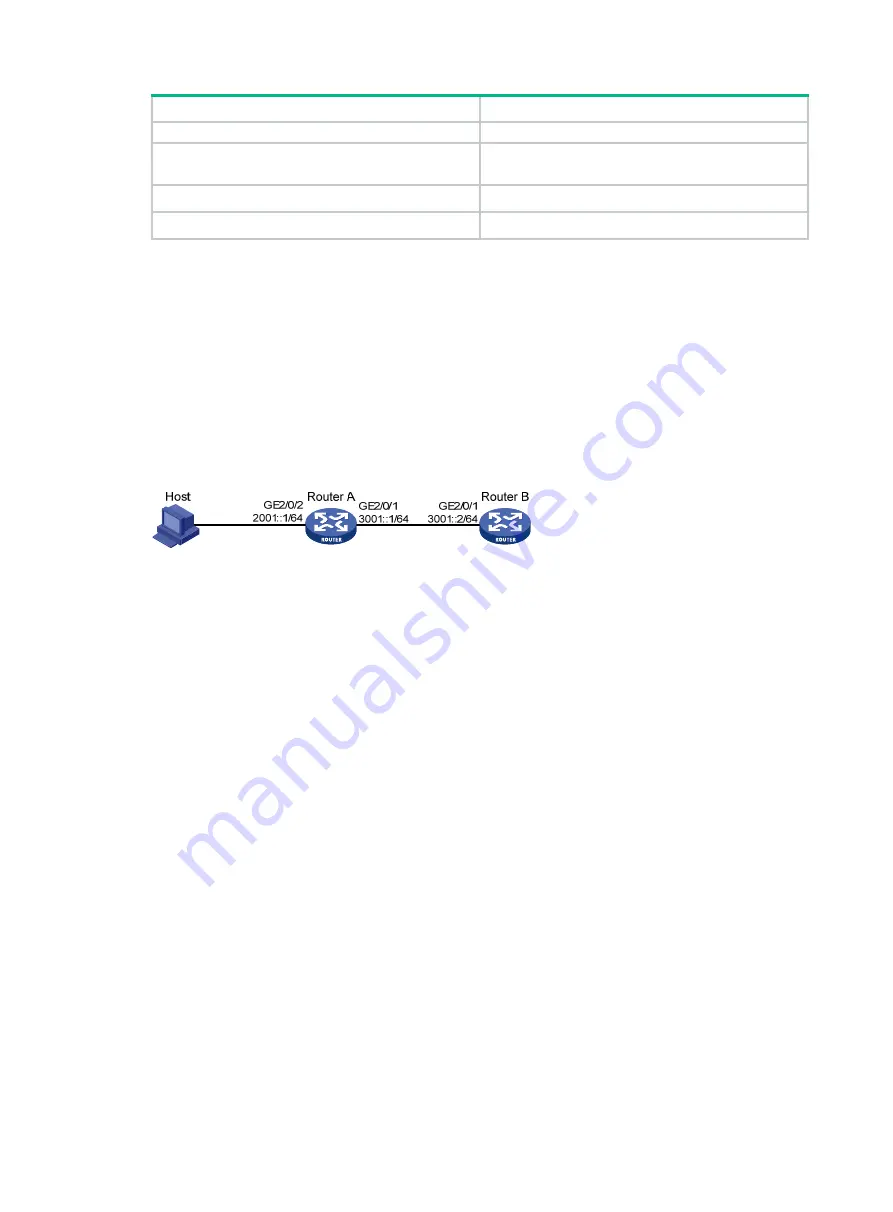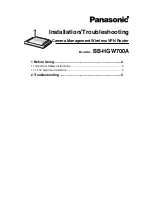
230
Task Command
IRF mode).
Clear IPv6 and ICMPv6 packet statistics (distributed
devices in IRF mode).
reset ipv6 statistics
[
chassis
chassis-number
slot
slot-number
]
Clear IPv6 TCP traffic statistics.
reset tcp statistics
Clear IPv6 UDP traffic statistics.
reset udp statistics
IPv6 configuration examples
Basic IPv6 configuration example
Network requirements
As shown in
, configure IPv6 addresses for the routers and verify that they can reach each
other. Configure a route to the host on Router B. Enable IPv6 for the host to automatically obtain an
IPv6 address through IPv6 ND. The host has a route to Router B.
Figure 90 Network diagram
Configuration procedure
1.
Configure Router A:
# Configure a global unicast address for interface GigabitEthernet 2/0/1.
<RouterA> system-view
[RouterA] interface gigabitethernet 2/0/1
[RouterA-GigabitEthernet2/0/1] ipv6 address 3001::1/64
[RouterA-GigabitEthernet2/0/1] quit
# Configure a global unicast address for interface GigabitEthernet 2/0/2 and enable it to
advertise RA messages (an interface does not advertises RA messages by default).
[RouterA] interface gigabitethernet 2/0/2
[RouterA-GigabitEthernet2/0/2] ipv6 address 2001::1/64
[RouterA-GigabitEthernet2/0/2] undo ipv6 nd ra halt
[RouterA-GigabitEthernet2/0/2] quit
2.
Configure Router B:
# Configure a global unicast address for interface GigabitEthernet 2/0/1.
<RouterB> system-view
[RouterB] interface gigabitethernet 2/0/1
[RouterB-GigabitEthernet2/0/1] ipv6 address 3001::2/64
[RouterB-GigabitEthernet2/0/1] quit
# Configure an IPv6 static route to the host.
[RouterB] ipv6 route-static 2001:: 64 3001::1
3.
Configure the host:
Enable IPv6 on the host to automatically obtain an IPv6 address through IPv6 ND.
# Display neighbor information for GigabitEthernet 2/0/2 on Router A.
















































